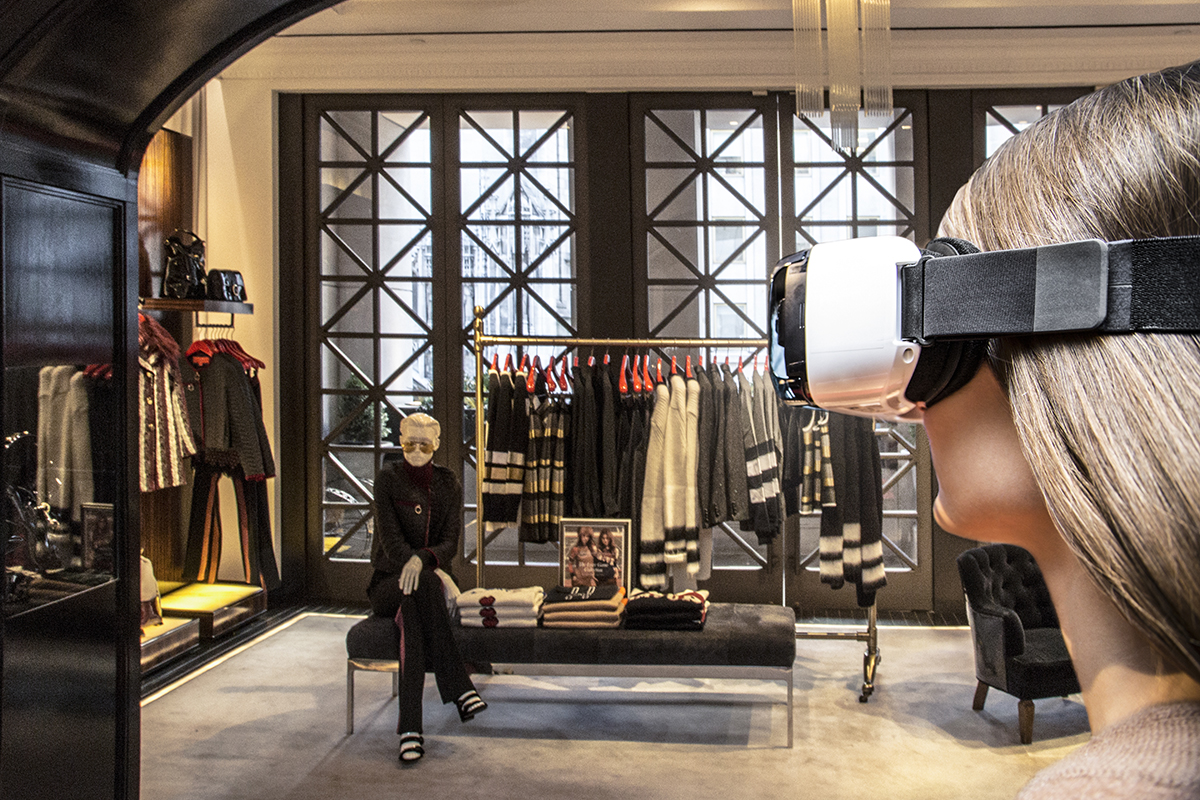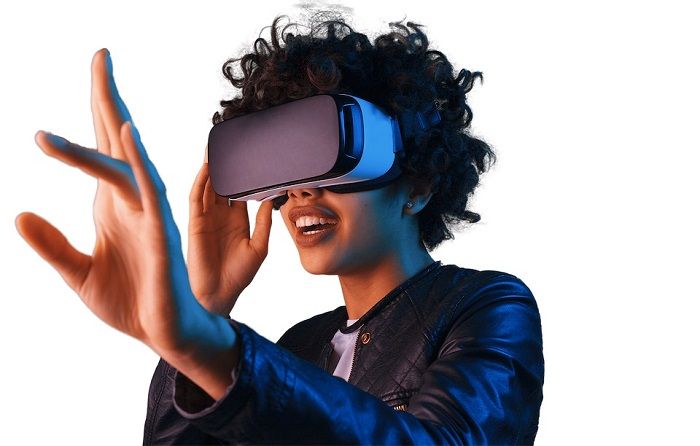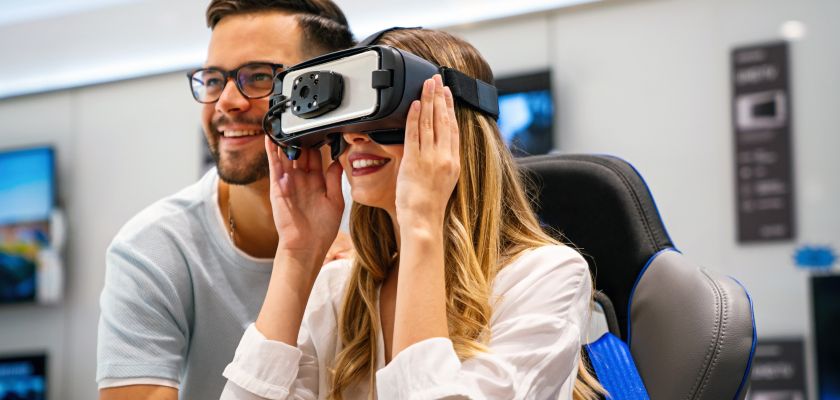Fashion And Virtual Reality - Redefining The Shopping Experience
This article highlights the importance of virtual reality (VR) in the fashion industry, focusing on its transformative impact on consumer experiences and business operations. It discusses how VR enhances the shopping experience with immersive virtual stores and personalized journeys, expands global accessibility, facilitates innovative marketing strategies, and promotes sustainability efforts in fashion.
Author:James PierceReviewer:Elisa MuellerFeb 21, 2024342 Shares22.7K Views

In a dynamic convergence of fashion and technology, virtual reality (VR) emerges as a game-changer, poised to redefine the shopping experience in unprecedented ways. We embark on a journey into the immersive realm of Fashion and Virtual Reality, where the boundaries between physical and digital shopping environments blur, and the possibilities for innovative experiences abound.
Join us as we explore how VR is revolutionizing the way we shop for fashion, offering immersive virtual stores, personalized try-on experiences, and innovative marketing strategies. Get ready to discover how the fusion of fashion and VR is reshaping the future of retail and redefining the very essence of the shopping journey.
What Is Virtual Reality?
Virtual reality (VR) refers to a computer-generated simulation of a three-dimensional environment that users can interact with in a seemingly real or physical way. Through the use of VR headsets or goggles, users are immersed in a virtual world that can be anything from a lifelike representation of a physical space to an entirely fantastical realm.
How Does VR Work?
VR technology relies on a combination of hardware and software to create immersive experiences. VR headsets contain high-resolution displays and motion sensors that track the user's movements, allowing them to navigate and interact with the virtual environment. Meanwhile, specialized software generates realistic graphics and audio, further enhancing the sense of immersion.
How Is Virtual Reality Used In Fashion?
Virtual reality (VR) is used in fashion in various innovative ways, transforming the industry and enhancing the overall shopping experience for consumers.
- Virtual Shopping Experiences- VR enables consumers to explore virtual stores and browse through clothing and accessories as if they were physically present in a brick-and-mortar store. This immersive shopping experience allows users to interact with products in a three-dimensional space, enhancing their understanding and appreciation of the items.
- Virtual Try-Ons- One of the most significant applications of VR in fashion is virtual try-ons. Users can create digital avatars that represent their body proportions and then try on virtual clothing items to see how they fit and look from different angles. This technology helps users make more informed purchasing decisions by providing a realistic representation of how the clothing will appear on them.
- Virtual Fashion Shows- Fashion brands are increasingly using VR to host virtual fashion shows and runway events. These immersive experiences allow viewers to attend fashion shows from anywhere in the world, providing a front-row seat to the latest collections and trends. Virtual fashion shows also enable designers to showcase their creations in innovative and visually stunning ways.
- Customization and Personalization- VR technology enables brands to offer customized and personalized shopping experiences to consumers. By integrating VR into their online platforms, brands can provide tailored recommendations based on individual preferences and style preferences, creating a more personalized shopping journey for each customer.
- Enhanced Product Visualization - VR allows consumers to visualize products in a more immersive and realistic manner. By creating virtual environments where users can interact with products, brands can provide a better sense of scale, texture, and detail, helping consumers make more informed purchasing decisions.
Importance Of Virtual Reality In Fashion
- Enhanced Shopping Experience- VR revolutionizes the way consumers shop for fashion by providing immersive and interactive experiences. Through virtual reality platforms, users can explore virtual stores, try on clothing using digital avatars, and visualize products in a realistic manner. This immersive shopping experience enhances engagement and satisfaction among consumers.
- Global Accessibility- VR technology eliminates geographical barriers, enabling consumers from around the world to access the latest fashion trends and collections. Virtual fashion shows and virtual stores allow fashion brands to reach a global audience, expanding their customer base and market reach beyond physical boundaries.
- Innovative Marketing and Branding- Fashion brands leverage VR technology to create innovative marketing campaigns and brand experiences. Virtual fashion shows, interactive VR experiences, and immersive brand activations capture consumers' attention and foster brand loyalty. VR enables brands to differentiate themselves in a crowded marketplace and leave a lasting impression on consumers.
- Personalized Shopping Experiences - VR facilitates personalized shopping experiences tailored to individual preferences and style preferences. By analyzing user data and behavior, fashion brands can offer personalized recommendations, styling tips, and product suggestions, enhancing the overall shopping journey and increasing customer satisfaction.
- Reduced Environmental Impact- Virtual reality in fashion contributes to sustainability efforts within the industry by reducing the need for physical samples, prototypes, and fashion events. Virtual fashion shows, virtual fitting rooms, and virtual product showcases minimize waste generation and carbon emissions associated with traditional fashion practices, promoting a more eco-friendly approach to fashion.
Challenges And Opportunities
- Technical Limitations- While VR holds immense potential for the fashion industry, there are still technical limitations to overcome. Issues such as hardware compatibility, graphic fidelity, and motion sickness can hinder the widespread adoption of VR technology in fashion.
- Accessibility and Affordability- Another challenge is ensuring that VR experiences are accessible and affordable to a wide range of consumers. High-end VR headsets and equipment can be costly, making it difficult for some people to participate in virtual shopping experiences.
- Privacy and Security Concerns- Privacy and security concerns also pose challenges for VR in fashion, particularly when it comes to collecting and storing personal data. Brands must take precautions to protect user privacy and ensure that sensitive information is handled securely.
- Potential for Creativity and Innovation- Despite these challenges, VR presents numerous opportunities for creativity and innovation in the fashion industry. From creating virtual fashion shows to developing new ways to visualize and interact with clothing, VR has the potential to revolutionize the way we experience fashion.
FAQ - Fashion And Virtual Reality
How Do Fashion Brands Use Virtual Reality To Engage With Consumers And Promote Their Products?
Virtual reality reduces the need for physical prototypes, samples, and fashion events, thereby minimizing waste and carbon emissions associated with traditional fashion practices.
What Impact Does Virtual Reality Have On Sustainability Efforts Within The Fashion Industry?
While virtual reality technology is becoming increasingly accessible, it may still be limited to consumers with access to VR devices and internet connectivity.
Is Virtual Reality Accessible To All Consumers, Or Is It Limited To Certain Demographics?
Examples include virtual fashion shows, virtual try-on experiences, immersive brand activations, and virtual store tours.
What Are Some Examples Of Virtual Reality Applications In The Fashion Industry?
Virtual reality enhances the shopping experience by offering immersive virtual stores, personalized try-on experiences, and innovative marketing strategies.
Conclusion
Virtual reality is significantly reshaping the fashion industry's approach to shopping. By providing immersive virtual shopping experiences, transforming traditional fashion shows and runways, offering customization options, and enhancing product visualization, VR has introduced a new dimension to the fashion landscape. As VR technology continues to advance, we anticipate even more exciting innovations that will further revolutionize the shopping experience.
Embracing VR not only presents new opportunities for brands to engage with consumers but also empowers shoppers with unparalleled access to the latest trends and collections. The fusion of fashion and virtual reality holds immense potential, promising to redefine how we interact with fashion in the digital age.

James Pierce
Author

Elisa Mueller
Reviewer
Latest Articles
Popular Articles

